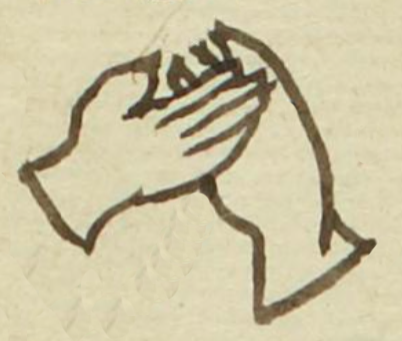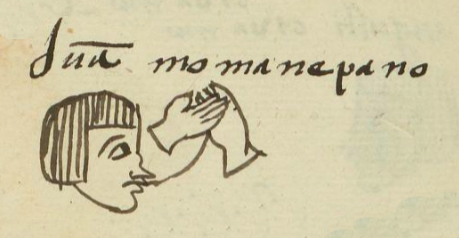Momanepano (MH555v)
This black-line drawing of the simplex glyph for the personal name or marital status, Momanepano (“Newlywed,” attested here as a man’s name), shows two hands (maítl) joining (nepanoa) one another. In contemporary Eastern Huastecan Nahuatl, nepanoa means, "to hold someone’s hand with intertwined fingers." The term for newlywed is momanepanoqui.
Stephanie Wood
Juā momanepano
Juan Momanepano
Stephanie Wood
1560
Stephanie Wood
marriage, casamiento, recién casados, newlyweds, hands, manos, cruzar, cruzando, juntando, casarse

momanepanoqui, a newlywed, https://nahuatl.wired-humanities.org/content/momanepanoqui
ma(itl), hand, https://nahuatl.wired-humanities.org/content/maitl
nepanoa, to join, https://nahuatl.wired-humanities.org/content/nepanoa
El Recién Casado
Stephanie Wood
Matrícula de Huexotzinco, folio 555v, World Digital Library, https://www.loc.gov/resource/gdcwdl.wdl_15282/?sp=190&st=image.
This manuscript is hosted by the Library of Congress and the World Digital Library; used here with the Creative Commons, “Attribution-NonCommercial-ShareAlike 3.0 License” (CC-BY-NC-SAq 3.0).





